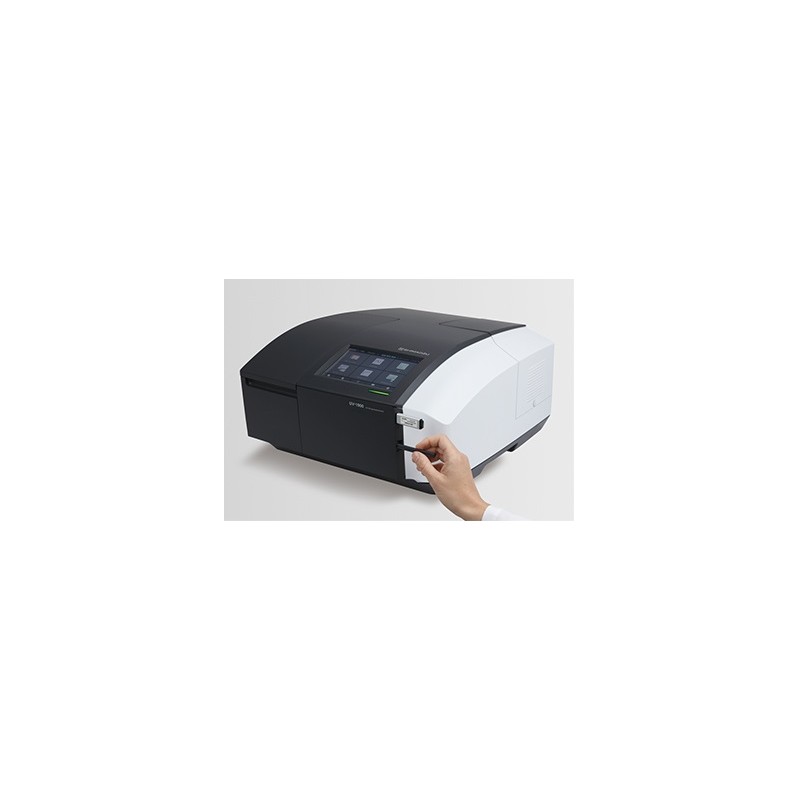









Best price to performance ratio photometer in it's class.
Ultra-Fast Scan Spectra can be acquired as fast as 29,000 nm /min. Ultra-fast scan is effective in tracking chemical reactions in a short time. In addition to the absorbance change at specified wavelengths, spectra can also be acquired in a short time with the UV-1900. Therefore, more detailed behavior can be investigated by observing spectra with the UV-1900. The figures below show the analysis of particle agglomeration process when salts are added to silver nanoparticles. Measurements of the 300 to 700 nm region were performed in ultra-fast scan mode. In addition to the decrease of absorbance at 400 nm and the increase of absorbance at 480 nm, the temporal changes of spectra can also be observed.
Stray light is at 0.5 % max. (198 nm), twice as low as the performance level of the UV-1800. With this stray light reduction, accurate measurements are possible up to the vicinity of 2 Abs even in the ultraviolet region. In addition, highconcentration samples can be quantified accurately. The figure on the right is a calibration curve for acetic acid, created with absorbance at 200 nm. The correlation coefficient is 0.9997, and correct measured values are obtained even in the vicinity of 2 Abs. Linearity will be lost in the high absorbance region due to the stray light.
The photometric repeatability accuracy is 0.0002 Abs max. (0.5 Abs and 1.0 Abs), an improvement of five times over the performance level of the UV 1800. With this high photometric repeatability accuracy, variance in the measurement results is suppressed, enabling more accurate quantitation and the detection of low-concentration samples. The figure below is a calibration curve for caffeine, created with absorbance at 273 nm. The calibration curve has an Abs = 0.0528 Conc., the lower limit of quantitation determined from the standard deviation is 0.0051 mg /L at a point where it would be 0.051 mg /LNote for the UV-1900.